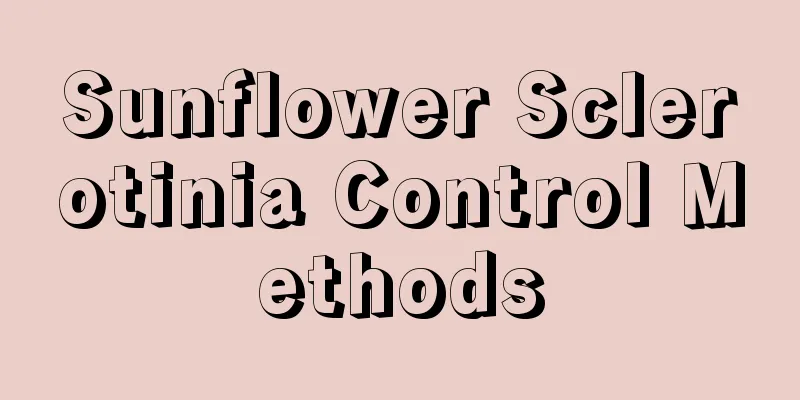Sunflower Sclerotinia Control Methods

Sunflower Sclerotinia TypesSclerotinia disease is mainly a fungal infection that causes the plant's flower disk to rot and the entire plant to wither. There are two common types: Straight withering typeIt mainly occurs in the seedling stage. Water-soaked spots appear on the stems, and white floc-like hyphae gradually grow out. When the air is dry, they turn black and the plants gradually wither and die. When the disease occurs, the stems are mainly affected, and the leaves turn yellow from the bottom to the top. Bad disk typeThis disease mainly appears after the flowers fade, with spots appearing on the flower disk and the receptacle becoming soft and brown. If it rains, the spots will gradually expand, the disease will worsen, and the entire flower disk will be covered with hyphae, causing rot. Prevention and control measuresPhysical preventionOnce disease spots are found on the stems, leaves or flower disks of the plants, the entire plant should be removed to prevent the spread of the fungus. The sclerotium has strong vitality and can survive in the soil for 3 years, so if there are other plants in the pot, it is recommended to change the soil and replant them. Chemical control1. Spray 1000 times of thiophanate solution before budding, spray 1 to 2 times. 2. Bud and flowering period: spray 1000 times dilution of Rhizoctonia solani solution, mainly on the lower part of the plant and the back of the disk. 3. Spray the solution of cypermethrin 500 during the seedling stage or flowering stage, once every 5 to 10 days, the preventive effect is excellent. 4. When the temperature reaches 18~20 ℃, it is the best time to spray pesticides on the ground. At this time, mixing 70% pentachloronitrobenzene with a small amount of wet soil and spreading it on the soil surface can effectively inhibit the germination of sclerotia, with a prevention effect of 80% . Correct maintenanceBacteria and fungi can easily grow in warm and humid environments, so it is important to control watering. For small potted varieties, try to use the immersion method to water. For home open-field cultivation, try to use drip irrigation, or use a small spray bottle for watering, which not only saves water but also prevents the occurrence of sclerotinia disease. |
<<: Main diseases of freesia and their prevention and treatment methods
>>: How to prevent and treat black rot of Dendrobium
Recommend
How to grow Zhujiao in water
1. Breeding methods 1. Container: The stem of thi...
Flowering period of tiger jasmine
1. Flowering period The flowering period of Tiger...
Can Erqiao Peony be propagated by cuttings?
Can cuttings be taken? This method is relatively ...
How to cultivate aerial root banyan bonsai
1. Use soil When cultivating aerial root bonsai, ...
Anthurium pictures
Anthurium Information Morphological characteristi...
How often should petunias be watered?
Key points for watering petunias Petunia, also kn...
How to keep your flower arrangements fresh at home
Selection of flower arrangement materials When ar...
What vegetables are suitable for growing at the south wall?
What vegetables are good to grow at the south wal...
Should I use a large or small pot for my baby's breath?
Should I use a large or small pot for my baby'...
What to do if the goldfish plant does not bloom
1. Increase lighting The goldfish spider plant ne...
What should I do if the soil for growing flowers becomes hard? Don’t just water the flowers foolishly, change the pot for them!
The harm caused by soil compaction is very seriou...
How to take care of the newly bought iris
1. Watering The newly bought irises can be plante...
When and how to plant chives
Chive Planting Time Generally speaking, chives ar...
Jasper cultivation methods and precautions
1. Soil Jadeite needs to be grown in well-drained...
How to take care of the newly bought glass jade
1. How to take care of the newly bought glass jad...









